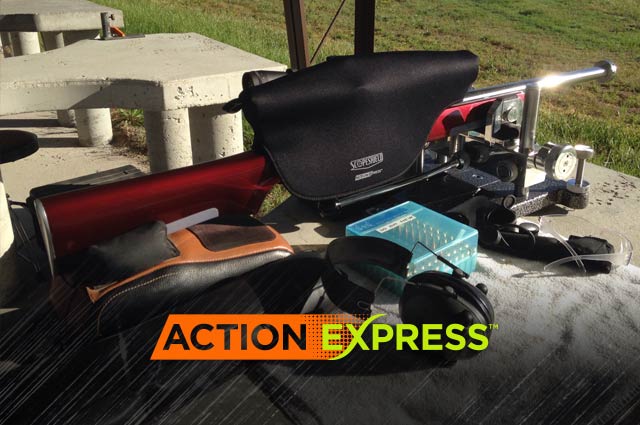In the last post of this series, Jason Stanley, Benchrest National Champion, started looking for the seating depth tune window and determined the best neck tension. In this post, he establishes the seating depth tune window and summarizes the best load for his rifle with some key points on how to sight in a rifle like a pro.
Finding the Seating Depth Tune Window
Range Day 7: 5-25-19 = 72 degrees F. 5 mph wind, no mirage.
When I was loading up the rounds for neck tension, I also loaded up different rounds with different seating depths, this time keeping the neck tension the same with a .324 bushing. The depths I wanted to try were; +.015, +.020, +.025. As stated before, I do not like to go more than +.020 because I risk sticking the bullet in the barrel if I ever have to eject a round without firing it. I did not shoot these rounds the last time out due to the mirage.
Due to family and work obligations, I was not able to get out and shoot until May 25th. Finally, a day with no mirage and just a little bit of wind. Today was a day with perfect shooting conditions, and the target proves it.

112-7 Group Target 5: Variable = Seating Depths
Going Right in the Middle of the Window
The +.015 shot another zero. This time a mind boggling .014” group. To be honest, I do not know how accurate that .014” measurement is. I do not own an official group scoring reticule. I simply take a caliper and measure the widest part and subtract the bullet diameter. When groups get this small, that process is not highly accurate. But regardless, that is a small group. The +.020 shot a tiny .046” and +.025 shot an amazing .023”. Bottom line, any seating depth between +.015 and +.025 will shoot in this barrel. That is my seating depth tune window. I am going to go right in the middle at .020” to give myself some room for error.
Spotting a Wavy Carbon Ring
One last piece of information on how to sight in a rifle is the shape of the carbon ring left on the case neck. The picture below shows a sine-curve shape carbon ring left on the outside of the case neck after firing. Brass from several of my tuned rifles has this wavy carbon ring. This has happened too many times for me to dismiss it. I do not know why it happens, but it is another piece of the puzzle that gives me that little extra bit of confidence in knowing the rifle is shooting as good as it can.

Sine curve carbon ring left on brass of tuned barrel
Picking the Best Load
Well, there you have it. My load for this barrel is a BIB 112 gr 7ogive bullet with a seating depth of +.020, held in place by a .324 bushing, being pushed by 34.7 gr of H4198 all set off with CCI BR4 primers.
This whole process took a grand total of 67 rounds, not including foulers and sighters. 20 rounds were to rule out the 118-10’s and the remaining 47 were with the 112-7’s. Notice that I was really close to my final tune after just fourteen rounds with the load ladder and first two groups. Under the right conditions, all this could have been done in one day, but it took me a tad over two months due to poor shooting conditions and a busy schedule.
How to Sight in a Rifle for Benchrest or Hunting
Regardless of your application, Benchrest or hunting, there are some repeating themes in this blog. First, a single group does not determine or dismiss the load you should use. There should be repeating data with general trends that all point to the same load. Second, you want to find a forgiving load. A load that will shoot well in many different types of conditions and is in the middle of your tune window. Third, keep searching. Good is usually pretty easy to find, but if you want great, you are going to have to dig a little deeper to get it.
I hope my tuning process will give you some ideas to try in your own tuning procedure as well as some insight on how to sight in a rifle. I would love to hear back from the readers with their techniques and routines. We are all students. Until next time, enjoy the experience.
For more tips and tools to level up your shooting, check out our other blogs or visit our online shop for durable scope covers.





